-
Latin America
Latin America
- Countries (hidden space)
- Galapagos & Ecuador
- Guatemala
- Mexico
- Panama
- Peru
- Popular Attractions
- Machu Picchu
- Inca Trail
- Easter Island
- Galapagos Islands
- Patagonia
- Rio de Janeiro
- Iguazu Falls
-
Africa
Africa
- Spacer Africa
- South Africa
- Zimbabwe
- Popular Attractions
- Cape Town
- Okavango Delta
- Sossusvlei Dunes
- Victoria Falls
- The Kruger
- The Garden Route
- Masai Mara
-
Asia
Asia
- Spacer Asia
- Laos
- Sri Lanka
- Uzbekistan
- Vietnam
- Popular Attractions
- Taj Mahal
- Lion Rock (Sigiriya)
- Angkor Wat
- Ha Long Bay
- Kyoto
- Europe & Middle East
-
Destinations
- Latin America
- Argentina
- Bolivia
- Brazil
- Chile
- Colombia
- Costa Rica
- Galapagos & Ecuador
- Guatemala
- Mexico
- Panama
- Peru
- Asia
- Cambodia
- India
- Japan
- Laos
- Sri Lanka
- Uzbekistan
- Vietnam
- Middle East
- Jordan
- Southern & East Africa
- Botswana
- Kenya
- Namibia
- South Africa
- Zimbabwe
- Europe
- Slovenia
- All Holiday Destinations
- Contact Us
-
About
About
Llama Travel provides high quality holidays at the lowest possible prices.
99% recommend us Lower prices - guaranteed Financially protected by ATOL
Josh's Visit to the Tambopata Research Center
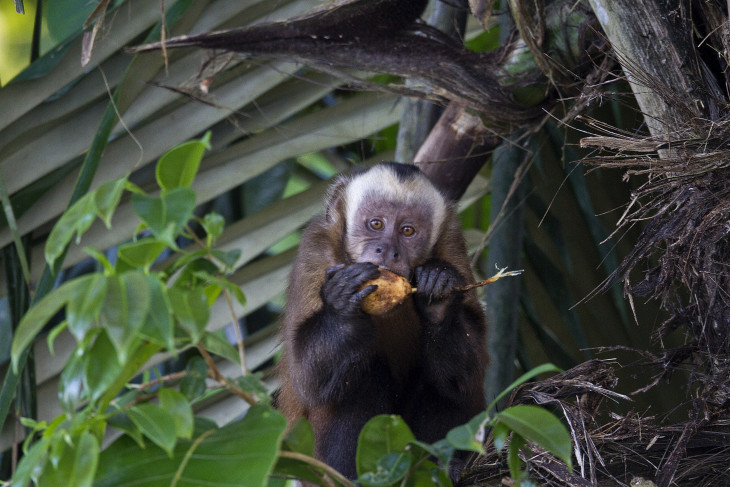
I was floored by the Amazon before I’d even got on the boat. Fluttering around the dock was an enormous cloud of butterflies of every shape and colour. They were everywhere. I’d never experienced so many of them in one place. The mineral-rich mud of the river attracts them in flocks, and I was to discover that it is entirely normal to come across fairytale scenes such as this one when walking through the jungle. The guides were completely unfazed. Only when one of them called me over to the boat did I realise how long I’d been staring.
The Tambopata Research Center (TRC) is only accessible by a long ride upriver, taking you deep into the Amazon Jungle. It is one of the most remote lodges in Peru, and the only one actually within the Tambopata National Reserve – the others are located in the ‘buffer zone’ on the fringes. Even from the top of the TRC’s observation tower, you can look to the horizon in every direction and not see a single sign of human habitation. The boat journey is long (about 2 and half hours), but it’s also one of the highlights, as this is where you have the best chance of seeing the jungle’s more elusive wildlife. If you have the privilege of seeing a jaguar on your trip, as 40% of visitors do between July and September, it will be whilst on the boat. The water and the clay deposits on the banks attract all kinds of wildlife, from monkeys to macaws. Within 20 minutes of getting on the boat, we’d stopped to watch a capybara on the shore – it was so close that you could even get a decent video of it on your phone.
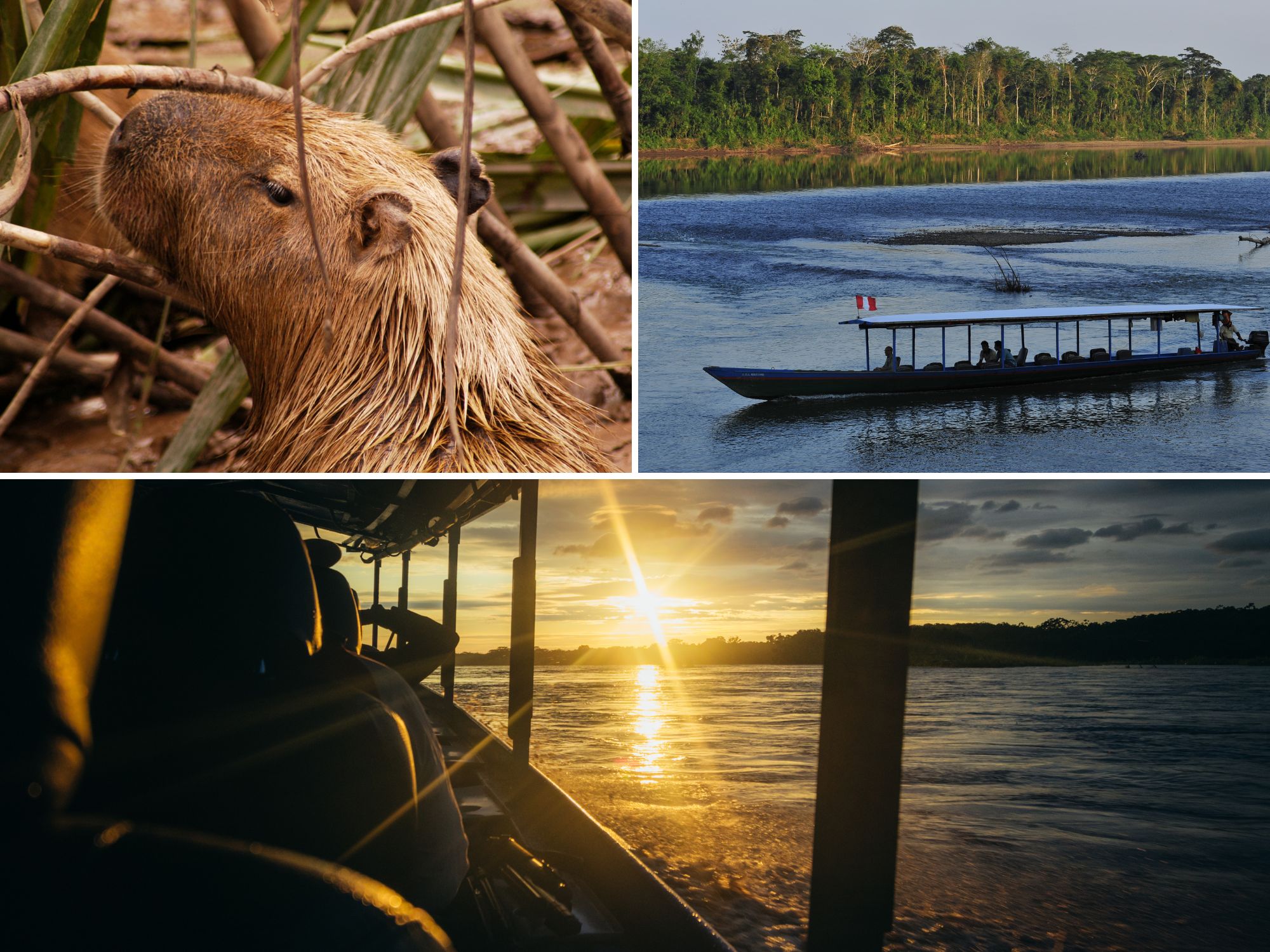
Boat drive to TRC & capybara on the shore
Upon arrival at the lodge, I was greeted with a cold drink, a face towel, and some plantain chips to enjoy whilst I was briefed on the features of the lodge. Then I was shown to my room, which had one wall completely open to the jungle. The guides called this ‘the Big Window’. ‘Don’t be afraid of the Big Window’ they said, since the animals have no interest in climbing into your room, and the bed is protected by a sturdy mosquito net. No sooner had the guide left than I watched an enormous morpho butterfly the size of a small bird drift erratically past the Big Window. It’s these sorts of sporadic encounters with wildlife that make staying in a lodge so special, and they happen all the time. Once, when walking to lunch, I watched a family of howler monkeys swing through the trees just above my head. Other times I’d watch hummingbirds’ flit busily through the garden, or curious macaws sitting on the roofbeams whilst eyeing up the bread rolls at the buffet.
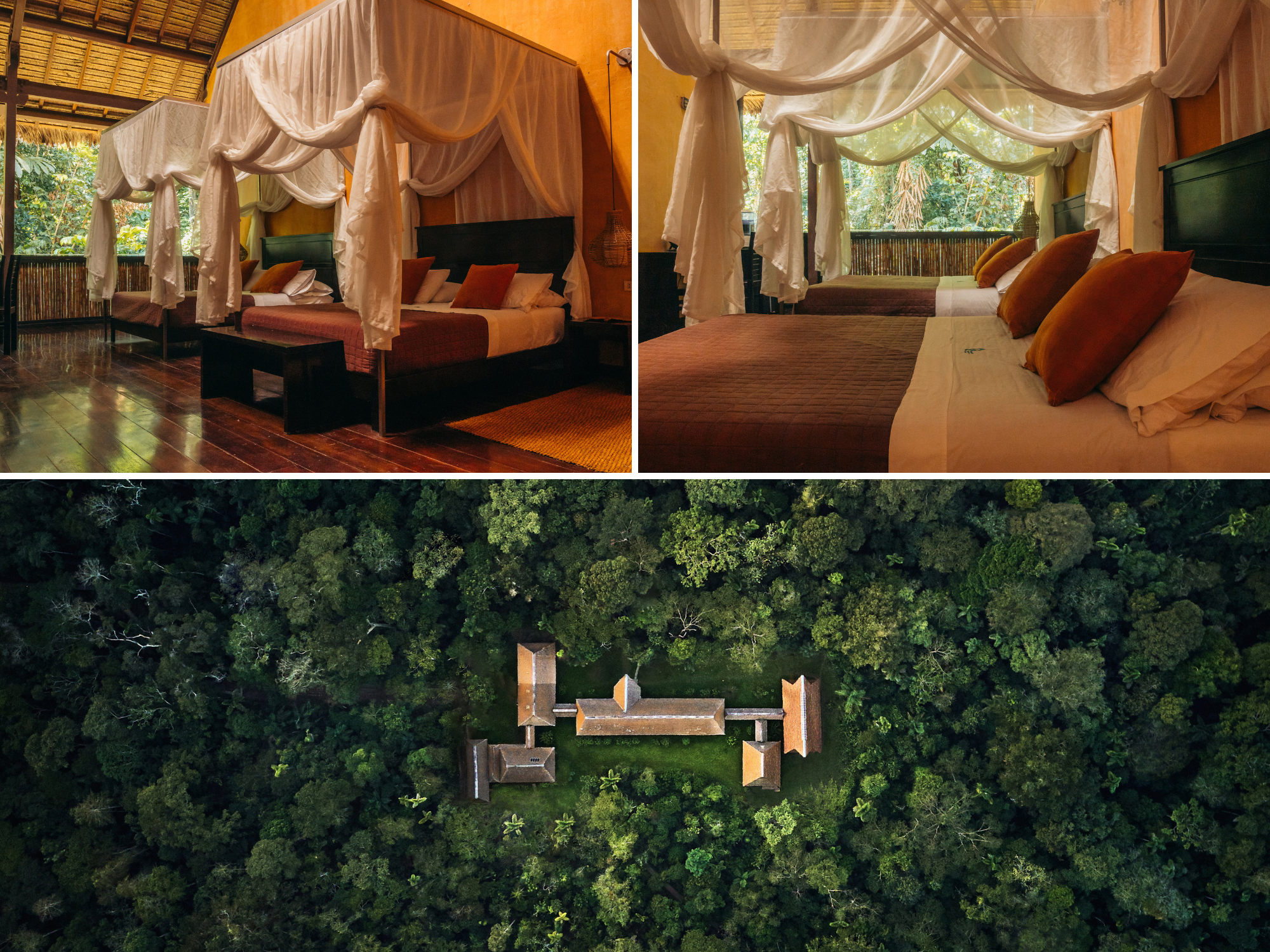
TRC lodge & rooms
Each morning and every evening, I went out with my guide to explore the forest. ‘What do you want to see?’ he’d ask, and my answer would determine the route. There’s a catalogue of trips in the lobby that you can flick through for inspiration, including climbing the observation tower to watch the canopy birds or enjoying a sundowner on an evening boat ride. If you’re interested in birds, then the clay lick is well worth a visit. These are riverside cliffs where mixed flocks of parrots, macaws and parakeets come to lick the clay to help them digest the unripe fruits they consume. Some days there will be hundreds of parrots lining the cliff like a very noisy tapestry. The guides all have telescopes, so you can observe them close-up from the opposite bank.
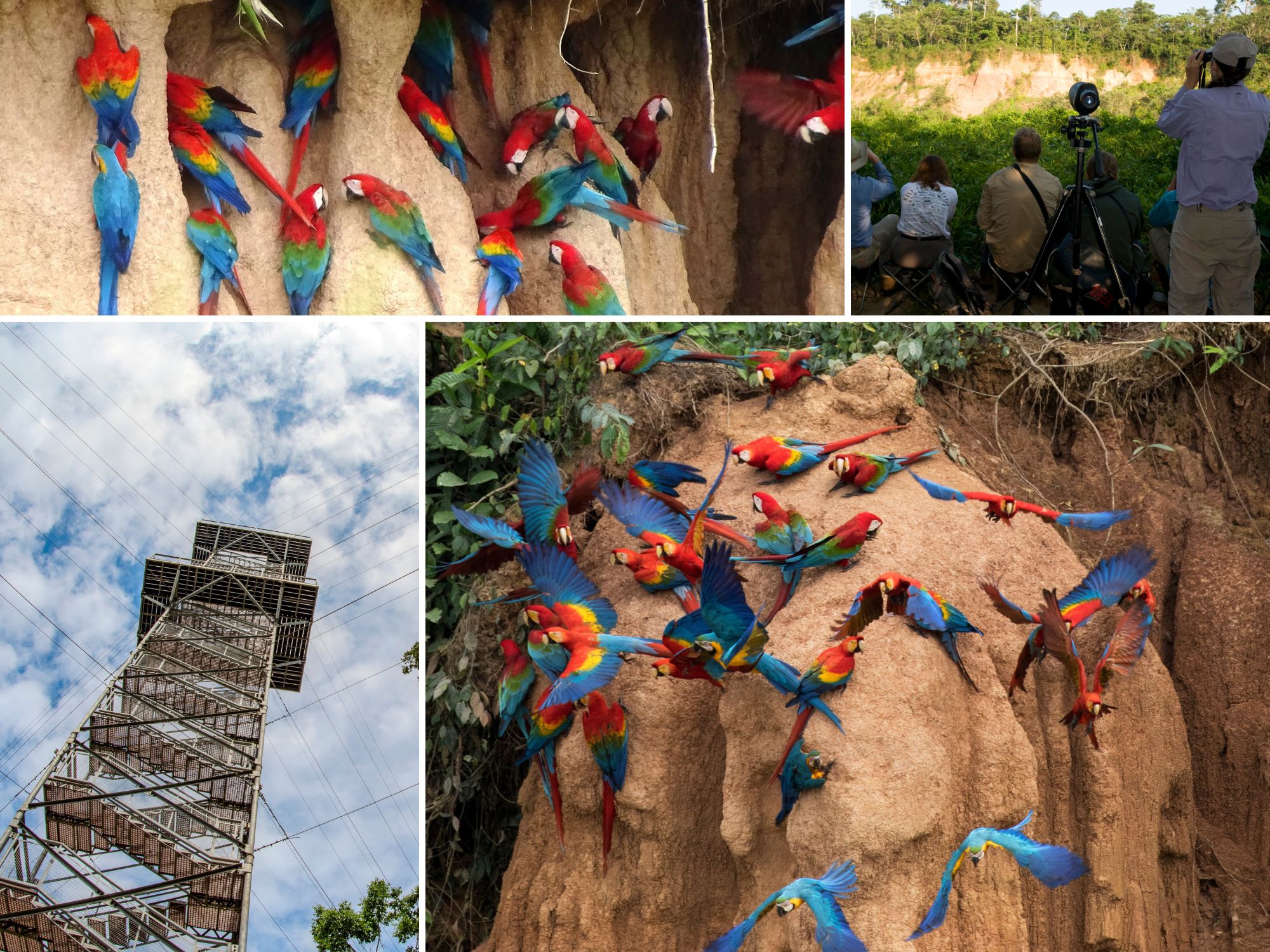
Observation Tower & Clay Lick
If you’re interested in seeing monkeys, then you’re spoiled for choice. Eight unique species live along the Tambopata River, which are currently being studied by the researchers at the lodge to observe their behaviour. The 8Primates project is collecting the calls of dusky titi monkeys, squirrel monkeys, brown capuchins, white-face capuchins, howler monkeys, spider monkeys, night monkeys and saddleback tamarins so that they can track them as they move through the forest. You have the option of going out with the scientists on one of their audio-collecting walks, where you can capture monkey calls with a parabolic mic. This is a fantastic way to learn about the rainforest. They will even send you the clips you recorded afterwards via email. I managed to spot at least five of the eight species during my three-day stay at the lodge.
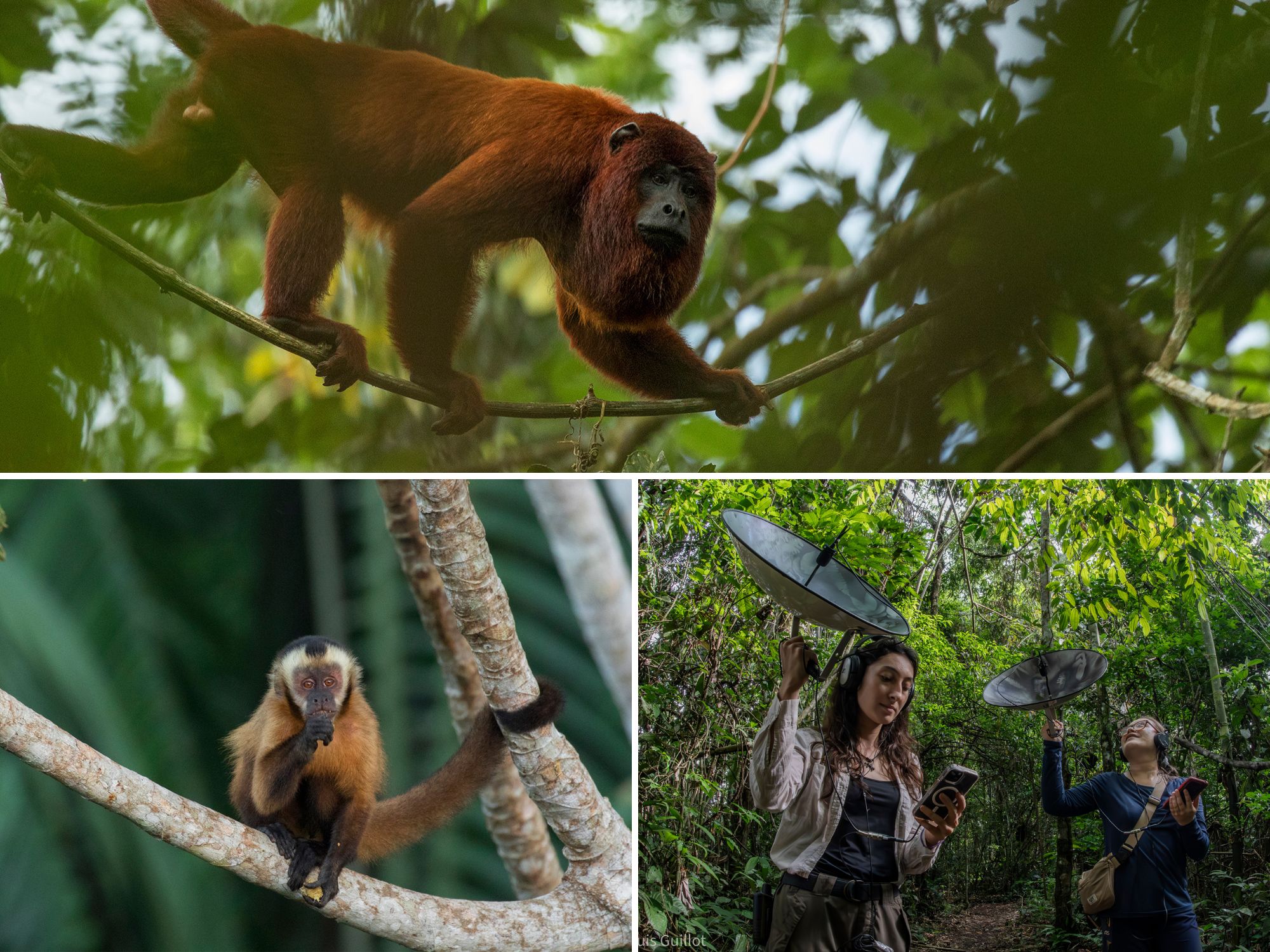
The 8 Primates Project at the TRC
My most spectacular moment in the Amazon came from one of the other research projects, one I didn’t expect to be so inspiring – collecting moths. I went out one evening with a researcher named Gabriel, armed with a backpack full of jam jars and specimen tubes. Gabriel took me to a moth trap consisting of a powerful light next to a white sheet. On the sheet, there were thousands of moths of every shape and size. Some were bone white with a metallic gold lining on their wings like fine crockery, whilst others were yellow and stripy trying their best to imitate bumble bees. They ranged in size from ‘microlepidotera’ that could stand on a pinhead, to enormous hawk moths that would be comfortable on your actual head. The ones we were looking for were about the size of a one-pound coin. Gabriel is currently trying to find new types of tiger moths. Whilst we filled the jars, he took the time to tell me about the different species, and what it’s like studying in the Amazon for eight months of the year, including the seasons where the whole forest floor is submerged. The next day when I visited the research station, Gabriel excitedly told me that we’d discovered a new species! He had its DNA ‘barcoded’ and sent it to be analysed by the researchers in Lima, who responded positively. I was elated! It felt incredible to be at the forefront of science and to have found something that perhaps no one had ever seen before. This is the fourth new species that Gabriel has found, and one of many that have been discovered by the team at the TRC.
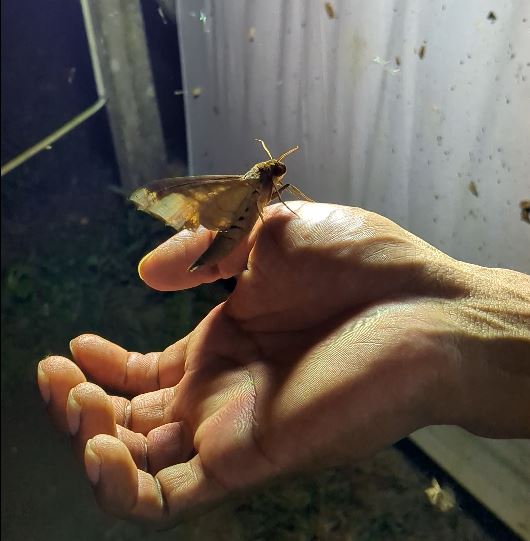
Hawk Moth
On my final night at the lodge, I signed up for the Sunset Cruise, which is included in the stay. I bought myself a bottle of beer, which was put in a cooler so I could enjoy it cold on the boat. We set off before dinner and explored the banks, stopping to watch a family of squirrel monkeys jump through the treetops. We spotted caimans and hawks and turkeys and macaws, then disembarked on a pebble beach to watch the sun go down over the treetops.
Our Peru experts would love to help you plan your holiday. Call us on 020 7263 3000 to find out more.
Found this blog useful? Sign up for our newsletter for more holiday tips and advice!
